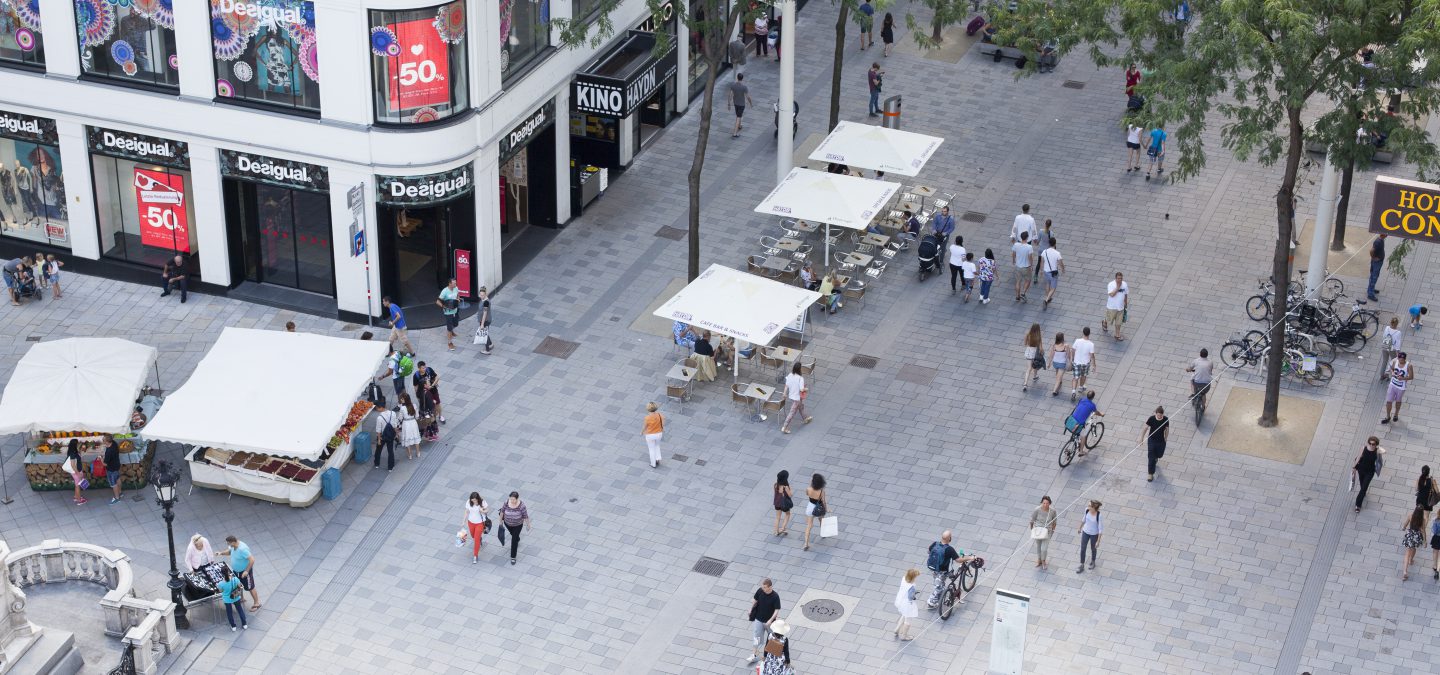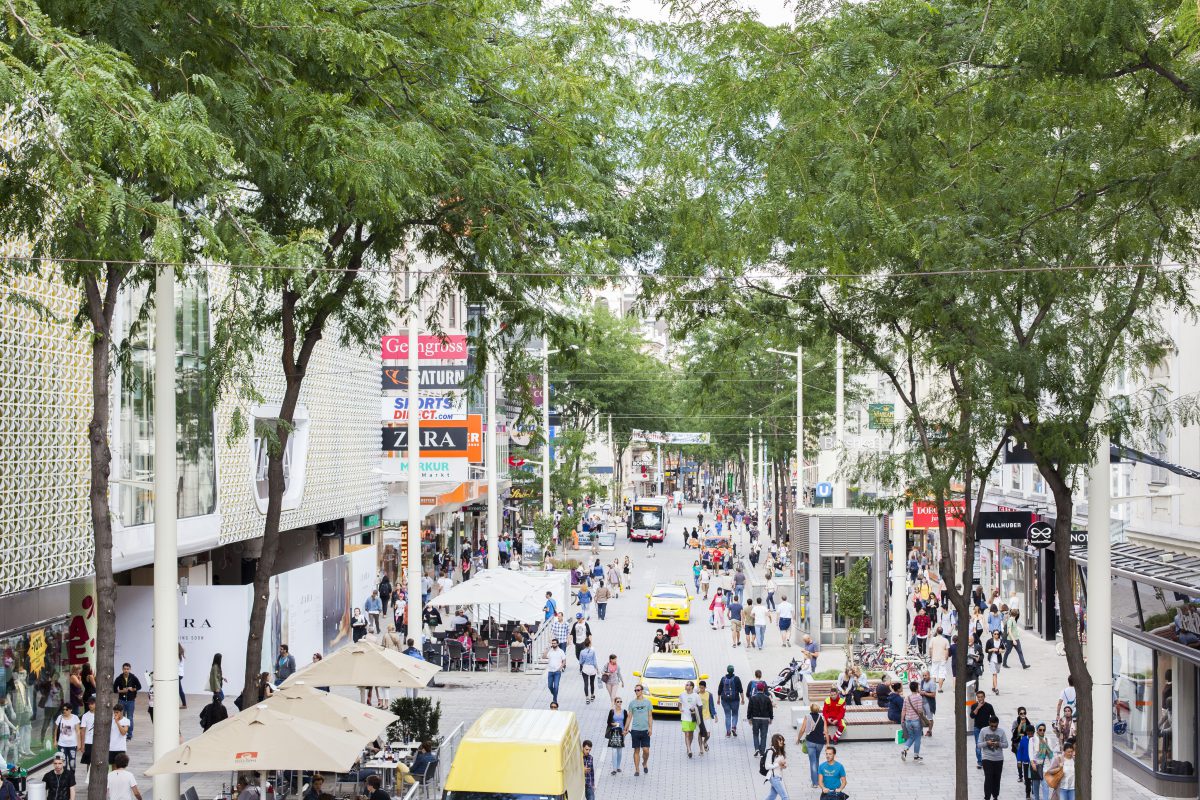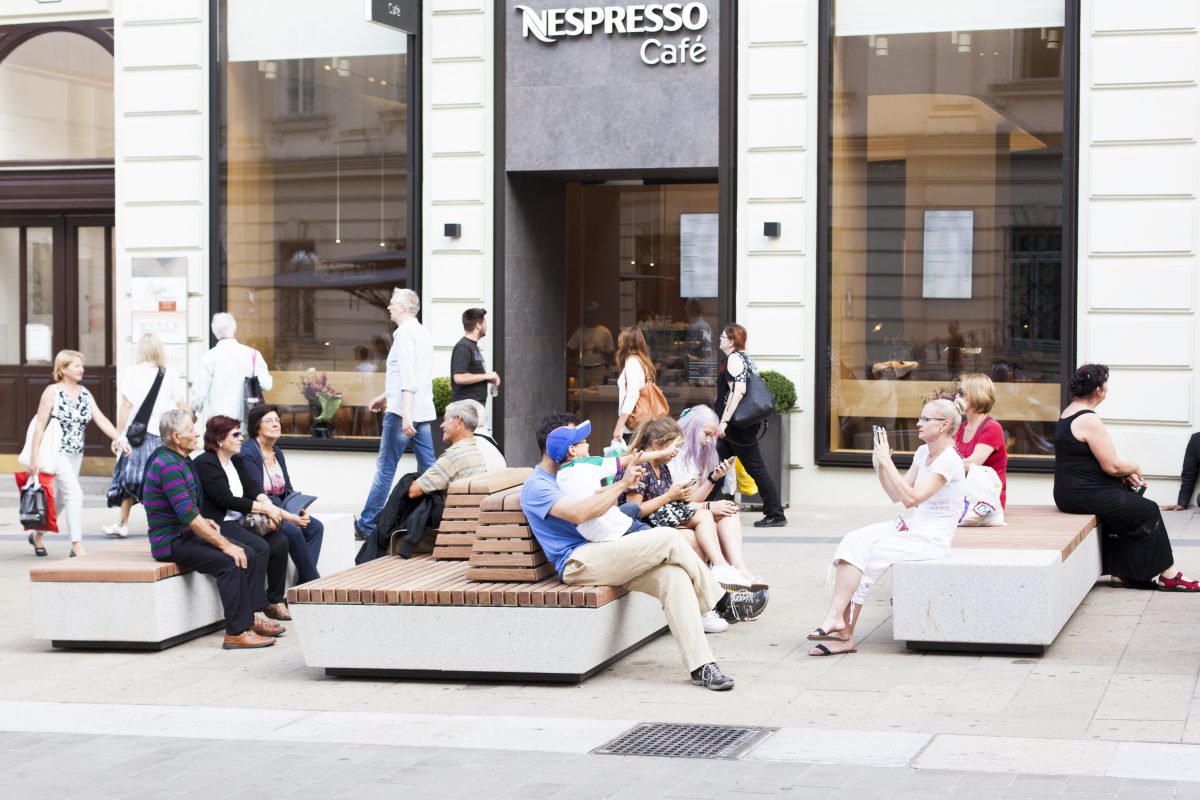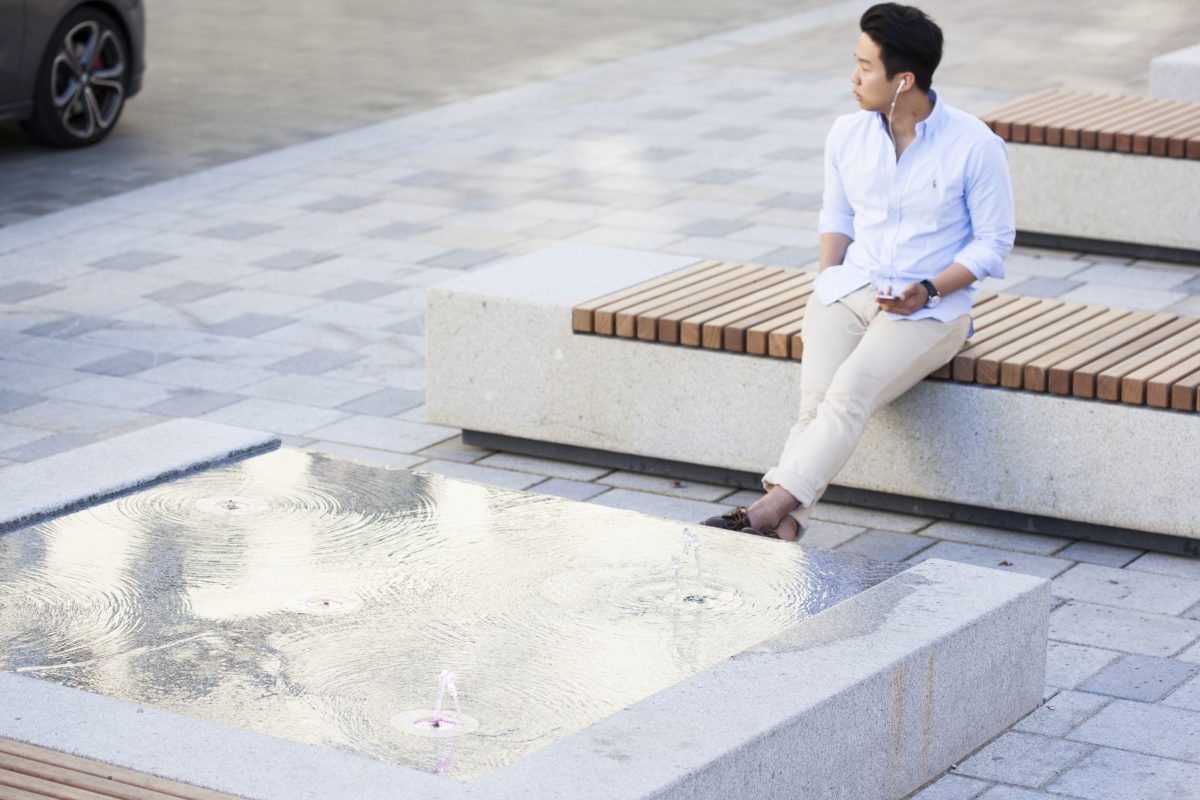
Keep up with our latest news and projects!

Design competition (Winner: Bureau B+B & orso.pitro)
Experiment/event: street closed down for cars
Referendum
Start construction
Phase 1 completed
Phase 2 completed



The Mariahilfer Strasse is a fancy, nineteenth century shopping boulevard in Vienna. In the last decades it became very heavy with traffic. The City of Vienna wanted to transform the street into an inviting, pedestrian friendly avenue. The 1,6 km long street has been redesigned as a continuous shared space, divided into three zones. Pedestrians rule the inner zone of the street. Here people can stroll and linger freely. Local traffic, buses and suppliers are allowed in, but the street is blocked for cars passing through. Cross-town traffic has to take a detour. The two outer zones are designated ‘shared spaces’. In the shared space principle, cars, bikes and pedestrians all use the same space. In the shared space principle, the street is considered to be a place to be, rather than a place to pass. Cars, bikes and pedestrians all use the same space, causing everybody to be more considerate. The street is divided into different lanes by subtle lines in the pavement; a fast lane in the middle and slow lanes on the sides. Benches, water elements and planters are placed in the wide curbs. Here, people can comfortably window-shop or just hang out.
 Mariahilfer Strasse ©Ricky Rijkenberg
Mariahilfer Strasse ©Ricky Rijkenberg
 Mariahilfer Strasse ©Ricky Rijkenberg
Mariahilfer Strasse ©Ricky Rijkenberg
 Mariahilfer Strasse ©Ricky Rijkenberg
Mariahilfer Strasse ©Ricky Rijkenberg
It took some time for the people of Vienna to get used to the idea of shared space: Viennese are fond of driving and did not want to give up the convenience of speeding through the Mariahilfer Strasse. Shopkeepers were afraid business would slow down with driving and parking less easy.
Winning the hearts of the local residents and entrepreneurs was an important part of the project: There was a referendum about the new design. Prior to the referendum, the City organized information meetings, together with the designers. The street was closed down for traffic one afternoon, so people could experience what that was like.
People now move together in a unified space. They stroll and linger. There are now more places for young people to meet up. (…) A new way of life is evolving. Günther Meier – center-manager
The best way to inform the public is a test set-up, carried out by Stadtland. They placed prototypes of the street furniture on the Mariahilfer Strasse in an early stage of the project. This had two functions: first, together with Stadtland we could test the design and the material. Second, the people got a preview of the renovation so they could get enthusiastic about it. We made a few technical adjustments, but basically sticked to the initial design. Stadtland also closed down the street for traffic one afternoon, so people could experience what that is like. People spontaneously organized picnics and games on the street. We put a long table in the middle of the street with a print of our design. People could write comments and ideas on it. They varied from “I would like a big trampoline” to ‘Finally, shopping will be fun!” and “This will ruin the economy”. This event made a lot of people enthusiastic for the transformation and gave us relevant input for the design.
Find creative ways to involve the public. The street was closed down for traffic one afternoon, so people could experience what that is like. People spontaneously organized picnics and games on the street. A long table was put in the middle of the street with a print of our design. People could write comments and ideas on it. Closing of the street really created a buzz.
Consider the legal consequences. Introducing a new traffic situation created a legal puzzle: what defines a traffic lane? Which parking regulations apply here? How to create safe intersections? It took two lawyers to figure everything out. We discussed all these questions in a detailed way, finding tailor made solutions for every complicated situation. For instance, we had to make an interruption in the shared space at the buss-lane crossing. Here it would not be safe to prioritize pedestrians.
Appoint a Street Manager. Working with all the different departments of the municipality sometimes proved to be a challenge. It was time consuming and the departments could have conflicting interests, like architectural quality versus traffic safety. An all-round street manager could make the process a lot easier.
The outcome of the referendum was that 53% voted in favor of the transformation. Half a year after completion, research company SORA held a survey. They asked what people would vote, if the referendum would take place now. 71% of the respondents said that they were now in favor of the new lay out. Shopkeepers were also relatively positive. 38% said that business improved by the renovation. 46% did not notice any change and only 9% experienced a negative influence.
Interested? Join The City At Eye Level and share your story!
Discover moreInvesting in local participation really shows off: In the end, 71% of the people are positive about the transformation of the Mariahilfer Strasse. There are several positive effects on the city. Thanks to the dramatic reduction of traffic, there is less noise and pollution. Now, the street is inviting to walk and bike through, enhancing public health through exercise. The transformation boosted the economy, but also offers ‘free’ space where public life can evolve.